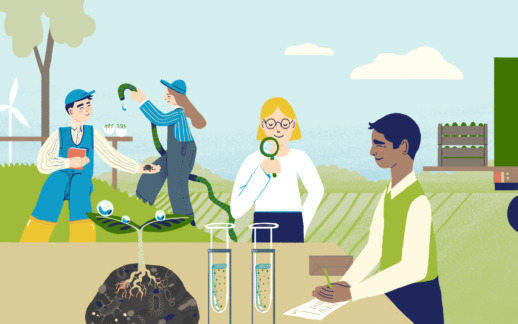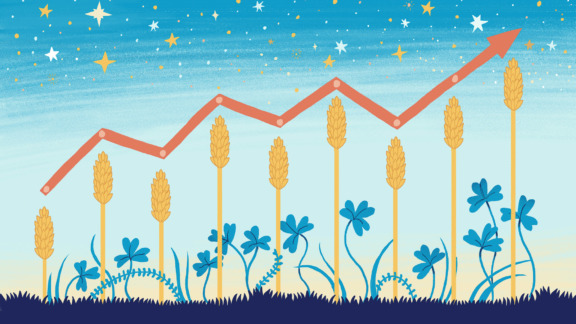Nutrient cycling in circular economy meeting at the European Parliament
Sirpa Pietikäinen, a Finnish MEP and the rapporteur for the EU Circular Economy package, hosted discussions on how to implement nutrient recycling in EU Circular Economy policies. BSAG was a co-organizer to the event at the European Parliament on May 27, 2015.
European Commission will shortly launch a public consultation on the proposed new Circular Economy strategy for Europe, told Heidi Jern from the Cabinet of the Commission Vice-President Jyrki Katainen. She encouraged all stakeholders interested in nutrient recycling issues to contribute with concrete proposals.
A short summary of the discussion topics below, based on the notes by Chris Thornton, European Sustainable Phosphorus Platform, ESPP.
Sirpa Pietikäinen, who is also the rapporteur for the EU Circular Economy package, opened the meeting, underlining the need to change our society and economy from a consume-and-dispose flow-through system, in which planetary boundaries are exceeded for many resources to a sustainable circular economy. “This requires a paradigm change and a systematic approach throughout society. And will offer important opportunities for new business and job creation.” Pietikäinen stated.
BSAG Secretary General, Mathias Bergman followed by stressing nutrient cycling and nutrient reuse as a key to addressing Baltic Sea eutrophication. The nutrient emissions to the waterbodies can be minimized when there are economically viable solutions to recover and reuse the nutrients. Business involvement is essential for the transition to a circular economy for phosphorus, nitrogen and carbon. Bergman introduced key elements BSAG suggest should be included in the possible Nutrient Policy Framework, (NPF).
- Policy planning and market creation
- Regulatory coherence
- Stakeholders, research, data and best practices
- Communication and public awareness
- Reforming CAP
More information on BSAG proposal, see the BSAG materials on the right.
Arnoud Passenier, the president of European Sustainable Phosphorus Platform, ESPP explained how networks and stakeholder dialogue through the value chain can contribute to promoting innovation and demonstrating success stories.
Professor Mark Sutton from UK NERC Centre for Ecology and Hydrology, presented the European Nitrogen Assessment http://www.nine-esf.org/ENA and global nitrogen policy perspectives.
“Without mineral nitrogen fertiliser, we could today feed only around half of the world’s population, but nitrogen use brings important “WAGES”, that is costs to water, air, greenhouse, ecosystem and soil”, professor Sutton explained.
Sutton also stated that in Europe, nitrogen losses are estimated to cost 70 – 320 billion €/year, with the biggest cost being nitrogen-emission caused air particles’ health impacts. The fertiliser value of nitrogen losses is c. 18 billion €/year.
European federation of farmers organisations and agricultural cooperatives, COPA-COGECA was presented by director Paulo Gouveia. He reminded that the circular economy is natural for agriculture, but that it can only function if the economic price is right and if added-value is generated and returned to farmers. It is essential to guarantee food quality and safety, to ensure consumer confidence. If this is ensured, then the circular economy can generate local jobs in collection, sorting and transformation of agri-food products.
Ludwig Hermann, a senior consultant from Outotec, presented the company’s role as a leading technology company in minerals, metals and nutrients (1.9 billion € turnover). He showed that the current cost of technical recovered nutrients is significantly higher than mineral phosphate fertiliser, but generalised P-recovery from wastewater would only cost a few €/person/year.
Hermann made clear that a number of technologies for P-recycling are already operational, but cost issues, along with logistics and variable characteristics of recovered products, mean that widespread implementation will not occur without appropriate regulatory or incentive drivers. The regulatory context needs to be reliable and stable over the long term to drive industry investment. He proposed as options to support the nutrient circular economy:
· Nutrient recovery or recycling targets, as currently proposed in Switzerland or Germany
· Contaminant limits for mineral fertilisers
· Implementing spreading limits for manures
· Establish harmonised quality criteria for recycled nutrient products
Head of Unit Claudia Olazabal, European Commission DG Environment (Agriculture, Forests and Soil) underlined that many farmers are pressurised by supermarkets and do not have margins sufficient to fund investment in improving nutrient management. As a result, the societal costs of agricultural pollution are paid by the consumer through water bills or loss of environmental value, whilst food stays cheap. These economic issues must be addressed to take forward the nutrient circular economy.
Olazabal also noted that existing EU regulations offer opportunities to improve phosphorus management, including the Water Framework, Nitrates, Urban Waste Water Treatment and Marine Strategy Framework Directives. The Nitrates Directive, for example, although it does not refer to phosphorus, has been effectively used by Member States to address agricultural phosphorus pollution and has led to significant gains in nutrient use efficiency and to “smart” farming.
Heidi Jern, Member of the Cabinet of Jyrki Katainen (Vice-President of the European Commission for Jobs, Growth, Investment and Competitiveness) took the floor from the audience and indicated that the Commission will shortly be launching a public consultation on the proposed new Circular Economy strategy for Europe. She said that all stakeholders interested in sustainable nutrient management issues are invited to contribute with concrete proposals for policies to move forward implementation of the nutrient circular economy.



